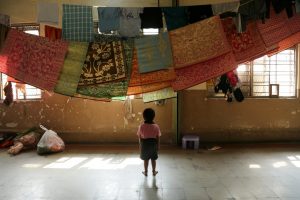Blog
Going beyond the numbers of human trafficking
Human trafficking is a dark phenomenon that happens in the dark. As we have previously reported, the latest international data shows an upward trend in human trafficking around the world. But beyond these figures lies a vast area that is often not illuminated and difficult to quantify.
We focus on the Asian region because it is the important goal of our work on the ground and as it reflects some of the characteristics that describe human trafficking today. According to the latest UNODC report, this region accounts for 73 percent of the world’s total number of sex trafficking victims. The largest in the world by far. But let’s zoom beyond this data.

Photo credit: Susanna Carpintero
Asia is the region in the world with the highest number of children detected and trafficked. Specifically, 45 per cent of children compared to 44 per cent of adult women. In other words, almost half of the victims trafficked and detected in Asia are under the age of 18. This chilling statistic does not mean that in real terms there are more exploited children than adult women, only that they are detected in greater numbers. However, it does give an idea of the scale of the problem and that it could be just the tip of a terrible iceberg.
It is also known, that 36 per cent of all such victims detected by authorities in Asia are trafficked exclusively for sexual exploitation. The rest are trafficked for labour exploitation or other purposes. Of the total number of victims trafficked for sexual exploitation, about 27 percent are girls and about 11 percent are boys. In other words, 38 out of every 100 victims of sex trafficking detected in Asia are minors.
Another peculiar feature of the Asian region when it comes to human trafficking is the domestic nature of this illegal activity. Ninety-six percent of it is done through the flow of victims between neighbouring countries, more than anywhere else in the world. The Asian region is also where most trafficking is detected in connection with a practice endemic to the region: child marriages, usually lumped under the ambiguous category of “other forms of exploitation” but a practice that is largely undocumented officially. Another hidden but common form of exploitation in some Asian countries, such as India, is bonded and domestic labour, with a corresponding black market. This phenomenon particularly affects girls, who in addition to being forced to work, radically disrupting their education, are exposed to equally invisible situations of sexual abuse and domestic violence.
For all these reasons, we see that beyond the general figures on human trafficking there is a wide space with corners and thin lines where there is still no data, which is characteristic of such a complex phenomenon and which happens outside the margins, but which are undoubtedly part of everything and is interrelated. They are nourished and fed by the same cause and effect relationship, which is always the same: making a profit out of extreme necessity or deceiving other people, in an unacceptable violation of human rights.
On the occasion of Human Rights Day we want to invite you to sign the manifesto #breakwithtrafficking.
We are committed to the campaign. Through this manifesto we would like to encourage you to be a part of this action promoted by Mumbai Smiles, since reporting is the first step to fight against this injustice.






